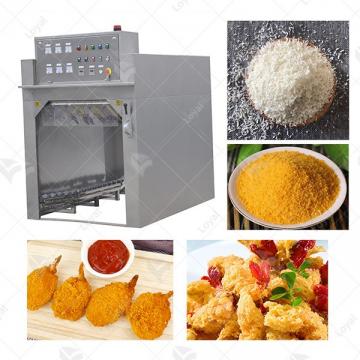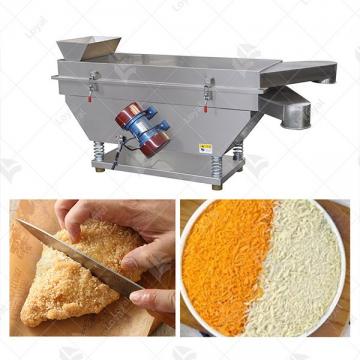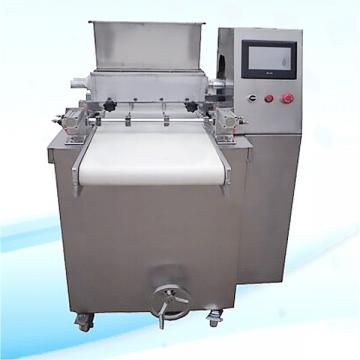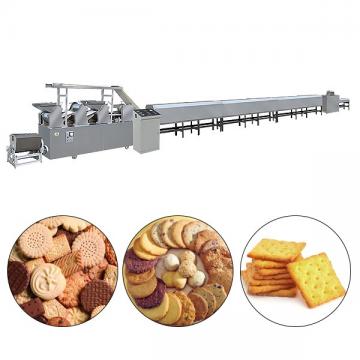
- Shandong Loyal Industrial Co.,Ltd.
- Macaroni Production Machine Instant Noodle Machine Biscuit Making Machine
Home> Processing> Unlock The Secret To Perfect nutrition powder production line:A nutrition powder production line Recipe Guide

Unlock The Secret To Perfect nutrition powder production line:A nutrition powder production line Recipe Guide
2025-05-12 17:49:52If you want to know more story about LOYAL brand, here can help you - https://www.facebook.com/foodmachineloyal
Introduction
In the contemporary food industry, nutrition powders have emerged as a vital segment, catering to diverse consumer needs. From infant - specific formulas to supplements for adults, these powders offer a convenient and concentrated source of nutrients. The production of nutrition powder is a meticulous process, relying on a well - organized and technologically advanced production line. This article delves deep into the various components, operations, and considerations of a typical nutrition powder production line.
The Building Blocks: Raw Materials
The journey of nutrition powder production commences with the selection of raw materials. While it is advisable for manufacturers to source ready - made powders locally for convenience and cost - effectiveness, some may opt for a more customized approach by starting from basic ingredients. In such cases, raw materials like grains (wheat, rice, corn), legumes, and milk - based products form the foundation. These raw materials are rich in carbohydrates, proteins, and fats, which are essential components of nutrition powder. For example, rice powder is a common base for baby rice nutrition powder due to its easy digestibility, while soy - based powders are popular among those with dairy - free requirements. Quality control at this stage is of utmost importance. Rigorous testing for factors such as purity, moisture content, and nutritional composition ensures that the final product meets the highest standards.

The Production Line Components
1 Mixing: The First Step of Blending
The mixing machine is the initial workhorse of the production line. Its primary function is to create a homogeneous blend of different raw materials. It combines dry ingredients like various flours, along with additives such as vitamins, minerals, and flavor enhancers. Additionally, liquids such as water or oils may be incorporated. The mixing process is carefully calibrated to ensure an even distribution of all components. A well - designed mixing machine features a powerful agitator or mixing blades that rotate at an optimal speed. This not only ensures thorough mixing but also prevents the formation of clumps. The presence of a precision - controlled feeding system allows for accurate dosing of each ingredient, maintaining the integrity of the product's nutritional profile.
2 Transportation via Screw Conveyor
Once the ingredients are mixed, a screw conveyor comes into play. This device is responsible for transporting the mixed materials to the next stage of production, typically the twin - screw extruder. The screw conveyor operates on a simple yet efficient principle. An electrically - powered screw rotates within a cylindrical housing. As the screw turns, it propels the material forward, much like a corkscrew moving through a cork. This method of transportation is highly reliable, as it can handle a wide range of viscosities and particle sizes without causing significant separation of the mixed components. It also enables a continuous and controlled flow of materials, which is crucial for maintaining the production line's efficiency.
3 Extrusion: Shaping and Cooking
The twin - screw extruder is the heart of the nutrition powder production line, performing multiple critical functions simultaneously. It has a complex design, incorporating several subsystems.
- Feeding System: A precisely regulated feeding system ensures a steady supply of the mixed raw materials into the extrusion chamber. This system can be adjusted to control the rate of material input, depending on the production requirements.
- Extrusion and Kneading: Inside the extruder, two intermeshing screws work in tandem to knead and extrude the materials. As the materials move through the extrusion zone, they are subjected to high pressure and shear forces. These forces cause the starches in the raw materials to gelatinize, which not only changes the texture but also enhances the digestibility of the final product.
- Heating and Cooling Zones: The extruder is equipped with heating and cooling elements. The heating zones are used to raise the temperature of the materials to the required cooking temperature, typically ranging from 100 - 200°C, depending on the type of nutrition powder. The cooling zones, on the other hand, help in solidifying the extruded product, maintaining its shape.
- Shaping and Cutting: At the end of the extrusion process, the product is shaped into the desired form, such as small pellets or flakes. A cutting mechanism, usually a set of rotating blades, cuts the extruded material into uniform pieces. This shaping and cutting process is essential for ensuring consistent particle size, which affects the powder's solubility and flowability.
4 Conveying to the Oven: Pneumatic Conveyor
After extrusion, a pneumatic conveyor is employed to transfer the shaped products to the oven. This type of conveyor uses air pressure to transport the materials, offering several advantages. It provides a gentle and efficient means of transportation, minimizing the risk of product damage. The pneumatic conveyor can also be designed to operate in a closed - loop system, reducing the chances of contamination. It is capable of quickly moving large volumes of products over relatively long distances, ensuring a seamless transition between the extrusion and baking processes.
5 Baking in the Oven: Drying and Flavor Development
The oven is a crucial component in the production line, serving multiple purposes. It is mainly used for removing moisture from the products, which is essential for extending their shelf life. There are two common types of ovens used in nutrition powder production: electric and gas - or oil - fired.
- Electric Ovens: Electric ovens offer precise temperature control, making them ideal for products that require a consistent and accurate baking temperature. They are also more environmentally friendly as they do not produce emissions during operation. However, they may be more expensive to operate in regions with high electricity costs.
- Gas - or Oil - Fired Ovens: These ovens are often preferred for large - scale production due to their cost - effectiveness. They can generate high levels of heat quickly, allowing for faster baking times. However, they require proper ventilation and safety measures to prevent the risk of gas leaks or oil spills.
The oven is typically designed with multiple layers, and the number of layers is often an odd number. This design promotes better heat distribution and air circulation within the oven, ensuring that all products are baked evenly. During the baking process, the moisture content of the products is reduced to a desired level, usually between 3 - 5%. This not only inhibits the growth of microorganisms but also enhances the flavor and texture of the nutrition powder.
6.Cooling: Preparing for Further Processing
After baking, the products are still at a high temperature and need to be cooled before further processing. A cooling conveyor is used for this purpose. It typically consists of a conveyor belt that moves the hot products through a cooling chamber. In the cooling chamber, cool air is blown over the products, rapidly reducing their temperature. This cooling process is crucial as it prevents the products from sticking together and also helps in maintaining their structural integrity. If the products are not cooled properly, they may continue to cook or undergo chemical changes, affecting the quality of the final nutrition powder.
7 Crushing: Achieving the Right Particle Size
Crushing is a two - stage process in the nutrition powder production line.
- First - Stage Crusher: The first - stage crusher, also known as Crusher - 1, breaks down the cooled products into smaller particles. It uses a combination of mechanical forces, such as impact and shear, to achieve this. The crushed materials then pass through a screening mechanism, which separates the particles based on their size. Oversized particles are recycled back into the crusher for further processing, while the appropriately sized particles move on to the next stage.
- Second - Stage Crusher: Crusher - 2 is designed to further refine the particle size of the powder. It operates at a higher speed and with more precision than the first - stage crusher. This stage is crucial for achieving the desired fineness of the nutrition powder. For example, baby nutrition powders often require a very fine particle size for easy digestion. The crushed powder is then passed through a series of sieves with different mesh sizes to ensure a consistent particle size distribution.
8.Final Mixing: Ensuring Uniformity
Before packaging, the crushed powder undergoes a final mixing process in a horizontal mixer. This mixer is designed to blend the powder thoroughly, ensuring that all nutrients, flavors, and additives are evenly distributed. It typically has a large mixing chamber and a set of agitators that move the powder in a circular motion. The mixing time and speed are carefully controlled to achieve the highest level of uniformity. This final mixing step is essential for maintaining the quality and consistency of the nutrition powder, ensuring that every scoop or serving contains the same amount of nutrients.
9 Packaging: Protecting and Presenting the Product
The packaging stage is the last but equally important step in the production line. The choice of packaging depends on several factors, including the type of nutrition powder, its target market, and shelf - life requirements.
- Packaging Materials: Common packaging materials include plastic bags, aluminum - foil pouches, and plastic or glass containers. Plastic bags are cost - effective and lightweight, making them suitable for bulk packaging. Aluminum - foil pouches offer excellent barrier properties, protecting the powder from moisture, oxygen, and light, thereby extending its shelf life. Plastic and glass containers are often used for retail packaging, providing a more presentable and convenient option for consumers.
- Packaging Machines: Packaging machines are used to fill, seal, and label the packages. These machines can be highly automated, capable of handling large volumes of products quickly and efficiently. They are equipped with sensors to ensure accurate filling levels and proper sealing, preventing leakage and contamination. The labeling process provides important information to consumers, such as product ingredients, nutritional value, and usage instructions.
Key Considerations in Production Line Design
1 Production Capacity
Determining the appropriate production capacity is a critical decision for manufacturers. Production lines can be configured to produce different volumes, ranging from 100 - 150 kg/h for small - scale operations to 800 - 1000 kg/h or more for large - scale industrial production. Factors such as market demand, production costs, and available resources need to be carefully considered. A higher production capacity may be more cost - effective in the long run, but it also requires a larger investment in equipment and infrastructure. On the other hand, a smaller production capacity may be more suitable for niche products or when market demand is uncertain.
2 Crushing Fineness Requirements
The required crushing fineness of the nutrition powder varies depending on its intended use. For example, nutrition powders for infants or elderly consumers may require a finer particle size for better digestibility. Different applications may also have different solubility requirements, which are directly related to the particle size. Manufacturers need to select the appropriate crushers and sieves to achieve the desired fineness. This may involve investing in high - precision crushing equipment and conducting regular quality control checks to ensure that the particle size meets the specified standards.
3 Oven Heating Method
As mentioned earlier, the choice between electric, gas, or oil - fired heating for the oven has significant implications. In addition to cost and environmental factors, safety regulations also play a crucial role. Gas - or oil - fired ovens require proper ventilation systems and safety shut - off mechanisms to prevent the risk of explosions or fires. Electric ovens, while safer in terms of fuel - related hazards, may require a more stable power supply. Manufacturers need to evaluate these factors based on their specific production requirements, local regulations, and available energy sources.
4 Voltage and Factory Space
The electrical requirements of the production line equipment, particularly the voltage, need to be carefully considered. Different countries and regions have different electrical standards, and using equipment with the wrong voltage can lead to equipment failure or even safety hazards. Additionally, the layout of the factory space is crucial for the efficient operation of the production line. Each piece of equipment requires a certain amount of space for installation, operation, and maintenance. A well - planned factory layout can minimize the distance between different production stages, reducing the time and cost associated with material transportation.
5 Delivery Time and Order Promotion
When purchasing a production line, the delivery time is an important consideration. Delays in delivery can disrupt production schedules and result in lost business opportunities. Manufacturers need to work closely with equipment suppliers to ensure that the production line is delivered and installed on time. Additionally, factors such as after - sales service, operator training, and any promotional offers from the supplier can also influence the purchasing decision. Good after - sales service can help in quickly resolving any technical issues that may arise during production, while operator training ensures that the production line is operated efficiently and safely.

Reference
The following are five authoritative foreign literature websites in the field of Industrial food machinery:
1. Food Engineering Magazine
Website: https://www.foodengineeringmag.com/
2.Food Processing Magazine
Website: https://www.foodprocessing.com/
3.Journal of Food Engineering
Website:https://www.journals.elsevier.com/journal-of-food-engineering
4. Food Manufacturing Magazine
Website:https://www.foodmanufacturing.com/
5. International Journal of Food Science & Technology
Website:https://onlinelibrary.wiley.com/

 Commercial Japanese Panko Bread Crumb Grinder Machine
Commercial Japanese Panko Bread Crumb Grinder Machine Japanese Bread Crumbs Processing Line
Japanese Bread Crumbs Processing Line Automatic Cookies Making Machines
Automatic Cookies Making Machines Fully Automatic Biscuit Making Machines
Fully Automatic Biscuit Making Machines